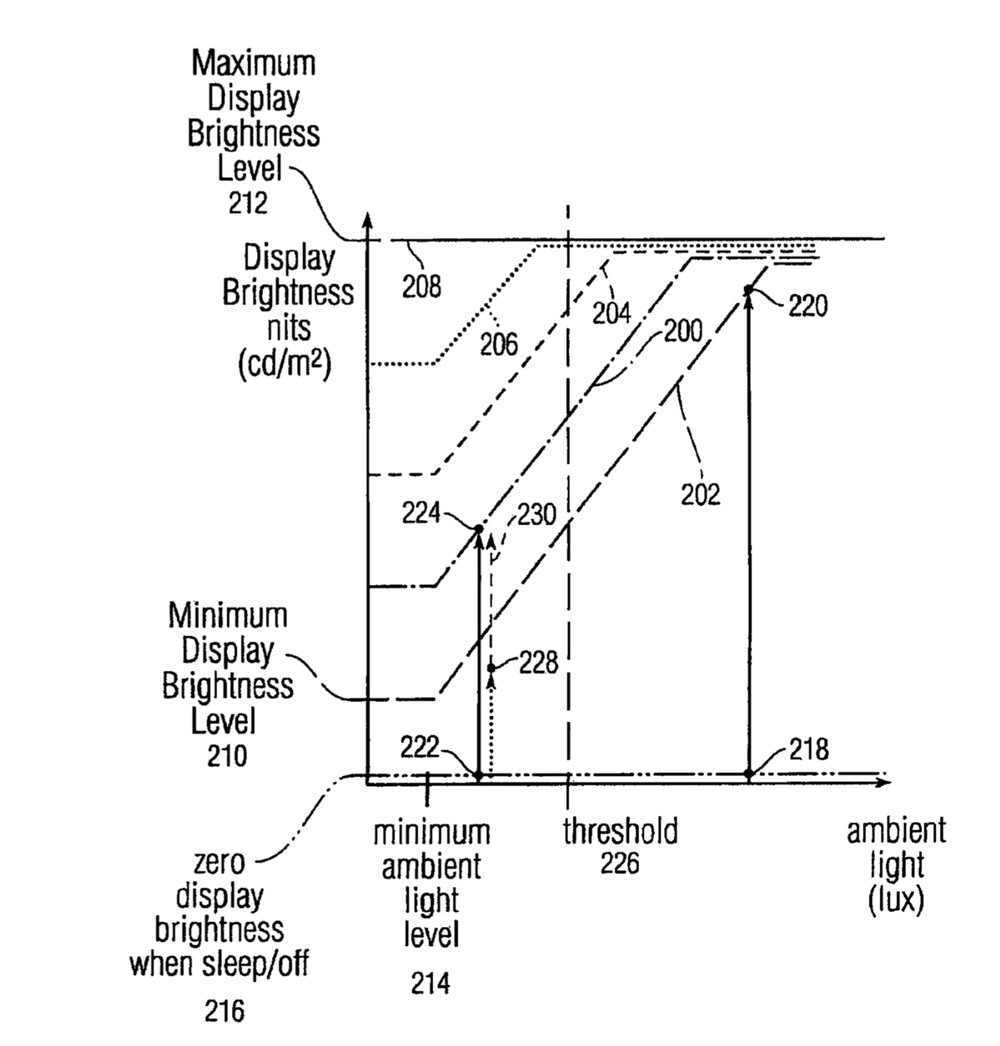Apple wants to protect your eyes, so has filed for a patent (number 20180102109) for “luminescence shock avoidance in display devices” on its various gadgets.
In the patent filing, Apple notes that because touch screens can reduce or eliminate the need for physical keypads or buttons, the touch screens themselves can often be made larger in comparison to the overall size of the device. These larger touch screens have enabled even small devices such as iPhones, iPads, Apple Watches, etc.
Because personal devices tend to have small batteries, power savings is critical. A large display illuminated to full brightness will exhaust a battery in no time, and thus power saving functions such as sleep modes are common in personal devices. For example, the display of a mobile telephone may be dimmed or go dark altogether until a call is received, or the screen of a PDA may go blank until the user activates a function or a communication such as an e-mail or text message is received.

However, if one of these personal devices is in a sleep mode in a dark environment and the display is suddenly illuminated due to a received call or other communication, a nearby user who happens to be looking at the device or is instinctively drawn to looking at the display when it illuminates can suffer temporary vision impairment. Because the user’s pupils have opened up in the dark environment, the sudden flash of light can cause short-term blindness or at least impaired vision.
This temporary impaired vision can range from a mere annoyance to a life-threatening situation if the user is driving a motor vehicle. Apple’s patent is intended to deal with such incidents.
Here’s Apple’s summary of the invention: “A luminescence shock avoidance algorithm selectively limits the brightness level of a display device when the display device is activated in a dark environment to prevent the temporary vision impairment that can occur when a display device is activated in a dark environment.
“The algorithm receives the state of the display (e.g. on or in standby mode), and can optionally receive an ambient lighting value from an ambient light sensor and a user-selectable manual brightness adjustment setting to determine whether luminescence shock avoidance should even be triggered, and if it is triggered, how much should the brightness level of the display be limited.”
Of course, Apple files for — and is granted — lots of patents by the U.S. Patent & Trademark Office. Many are for inventions that never see the light of day. However, you never can tell which ones will materialize in a real product.
